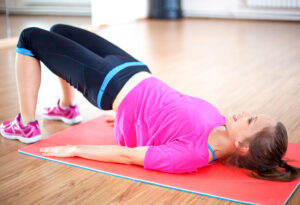Kegel Exercises: The Complete Guide
Kegel exercises are designed to strengthen the muscles of your pelvic floor, providing support for your bladder and bowel function. These exercises involve a simple clench-and-release technique that targets the pelvic floor muscles. The pelvic floor refers to a collection of muscles and tissues that form a sling or hammock-like structure at the bottom of your pelvis, supporting your reproductive organs. Weakness in the pelvic floor can contribute to problems like loss of bladder or bowel control. By regularly performing Kegel exercises, you can enhance the strength and functionality of your pelvic floor muscles.

Why Do Kegel Exercises?
- Both women and men can benefit from performing Kegel exercises to strengthen their pelvic floor muscles.
- Various factors, including pregnancy, childbirth, aging, and weight gain, can contribute to the weakening of the pelvic floor muscles in women.
- The pelvic floor muscles are responsible for supporting the womb, bladder, and bowels. When these muscles are weak, the pelvic organs may descend into the vagina, causing discomfort and potentially leading to urinary incontinence.
- Men can also experience a decline in the strength of their pelvic floor muscles as they age. This can result in both urinary and fecal incontinence, especially for those who have undergone prostate surgery.
Finding the pelvic floor muscles in Women
- When beginning Kegel exercises, it can be challenging to identify the correct set of muscles to target.
- One method to locate these muscles is by gently inserting a clean finger into the vagina and then tightening the vaginal muscles around the finger.
- Another way is to attempt to halt the flow of urine while urinating. The muscles engaged in this action are the pelvic floor muscles.
- Familiarize yourself with the sensation of contracting and relaxing these muscles.
- However, it is important to note that stopping and starting urine regularly or frequently doing Kegel exercises with a full bladder is not recommended, as it can lead to incomplete bladder emptying and increase the risk of urinary tract infections (UTIs).
- If you are unsure whether you have correctly identified the pelvic floor muscles, it is advisable to consult with your gynaecologist for guidance.
- Your gynaecologist may suggest using a vaginal cone, which is inserted into the vagina and held in place using the pelvic floor muscles.
- Biofeedback training is another helpful method for identifying and isolating the pelvic floor muscles. This procedure involves the insertion of a small probe into the vagina or the placement of adhesive electrodes on the external area of the vagina or anus.
- During the training, you will be instructed to perform a Kegel contraction. A monitor will display whether you have engaged the correct muscles and the duration of the contraction.
Finding the pelvic floor muscles in Men
- Men can encounter similar difficulties in identifying the appropriate group of pelvic floor muscles.
- To locate these muscles, men can try inserting a finger into the rectum and attempt to squeeze it, while ensuring that the muscles of the abdomen, buttocks, or thighs are not tightened.
- Another helpful technique is to contract the muscles responsible for preventing the release of gas.
- If difficulties persist, practicing the interruption of urine flow can be a reliable method. However, it is important to note that this should not become a regular practice.
Goals and Benefits of Kegel Exercises
- Always empty your bladder before performing Kegel exercises. As a beginner, find a quiet and private place to sit or lie down for your exercises. As you practice, you will discover that you can perform them anywhere.
- When you start doing Kegel exercises, tense the muscles in your pelvic floor for a count of three, and then relax them for a count of three. Repeat this sequence for 10 repetitions. Over the next several days, continue practicing until you can hold the muscle tension for a count of 10. Aim to do three sets of 10 repetitions every day.
- Do not be discouraged if you do not see immediate results. According to the Mayo Clinic, it may take a few months for Kegel exercises to have an effect on urinary incontinence.
- Additionally, Kegels work differently for each person. Some people experience significant improvement in muscle control and urinary continence, while for others, Kegels may help prevent the condition from worsening.
Cautions
- If you experience pain in your abdomen or back following a session of Kegel exercises, it indicates that you are not performing them correctly. Remember that while contracting your pelvic floor muscles, the muscles in your abdomen, back, buttocks, and sides should remain relaxed.
- Lastly, it is important not to overexert yourself during Kegel exercises. Working the muscles excessively can lead to fatigue and hinder their ability to perform their essential functions.
How Can you do Kegel Exercises?
- Both men and women can perform Kegel exercises using the same approach.
- To begin, it is important to locate your pelvic floor muscles, often referred to as PC muscles. You can identify these muscles by interrupting the flow of urine while urinating.
- The muscles engaged in stopping the urine flow are your PC muscles.
- These muscles also play a role in controlling the release of gas. In men, contracting the PC muscles may cause the testicles to rise.
Try the Easiest Kegel Exercises
- After locating your PC muscles, you can begin practicing flexing them.
- Contract and hold your PC muscles for a duration of 5 to 20 seconds.
- Subsequently, release the contraction.
- Repeat this exercise 10 to 20 times consecutively, three to four times a day.
- Gradually increase the number of contractions and the duration of each contraction.
- Over time, this straightforward exercise can contribute to strengthening your PC muscles.
- This, in turn, may lead to improvements in bladder control and sexual function.
Add Variety to your Workout
- To add variety to your Kegel workout, consider trying different variations of the basic exercise.
- For instance, you can contract and release your PC muscles rapidly, performing several repetitions in quick succession.
- Another option is to practice contracting the muscles slowly, emphasizing control and endurance.
- Additionally, you can experiment with different positions while performing Kegel exercises, such as standing, sitting, or lying down.
- While engaging in Kegel exercises, make a conscious effort to avoid tightening other muscles, such as your abdominal muscles, buttocks, or thighs.
- It is also important not to hold your breath. Instead, maintain a relaxed and steady breathing pattern while keeping the rest of your body still and relaxed.

